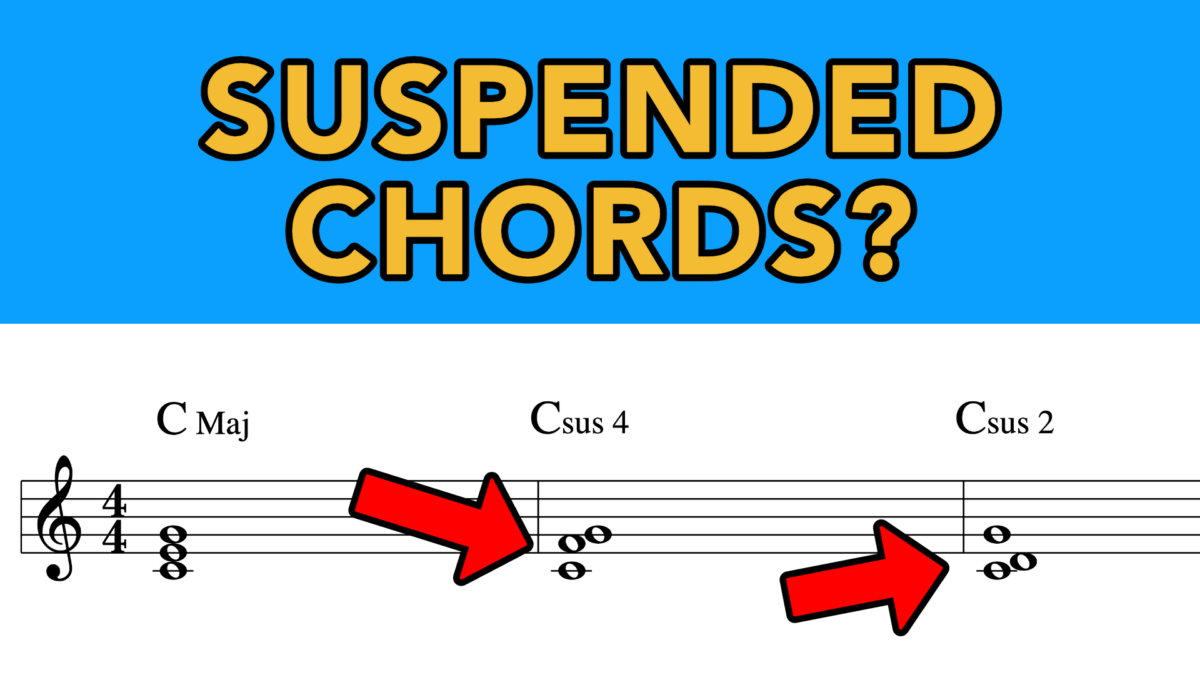 Easy Explanation: a suspended chord, also called a sus chord, is a chord where the usual 3rd (minor or major) is either a 4th or 2nd from the root note. Which creates either a sus 4 chord or a sus 2 chord.
Easy Explanation: a suspended chord, also called a sus chord, is a chord where the usual 3rd (minor or major) is either a 4th or 2nd from the root note. Which creates either a sus 4 chord or a sus 2 chord.
The end result is a chord that is neither a major chord, nor a minor chord, but something in between. You could say that it is “hanging in suspense”, and waiting to be resolved.
How to use Suspended Chords
The main way to use suspended chords is to create extra emotion by introducing a light tension in the harmony.

It works because the suspended note harmony, meaning the 2nd or 4th, will have an emotional pull towards resolving that suspended note into a major or minor 3rd. You don’t have to do it, but in most cases it is used in this way in voice leading.
Try it out for yourself. Start with any triad chord, and before you change to another triad in your chord progression, use a suspended version of that chord as an “in between” chord.
For example: C Major – F sus 2 – F Major. Or D minor – A sus 4 – A minor. Adding this suspended chord will create more harmonic depth, extra emotion, and an overall more interesting chord progression.

